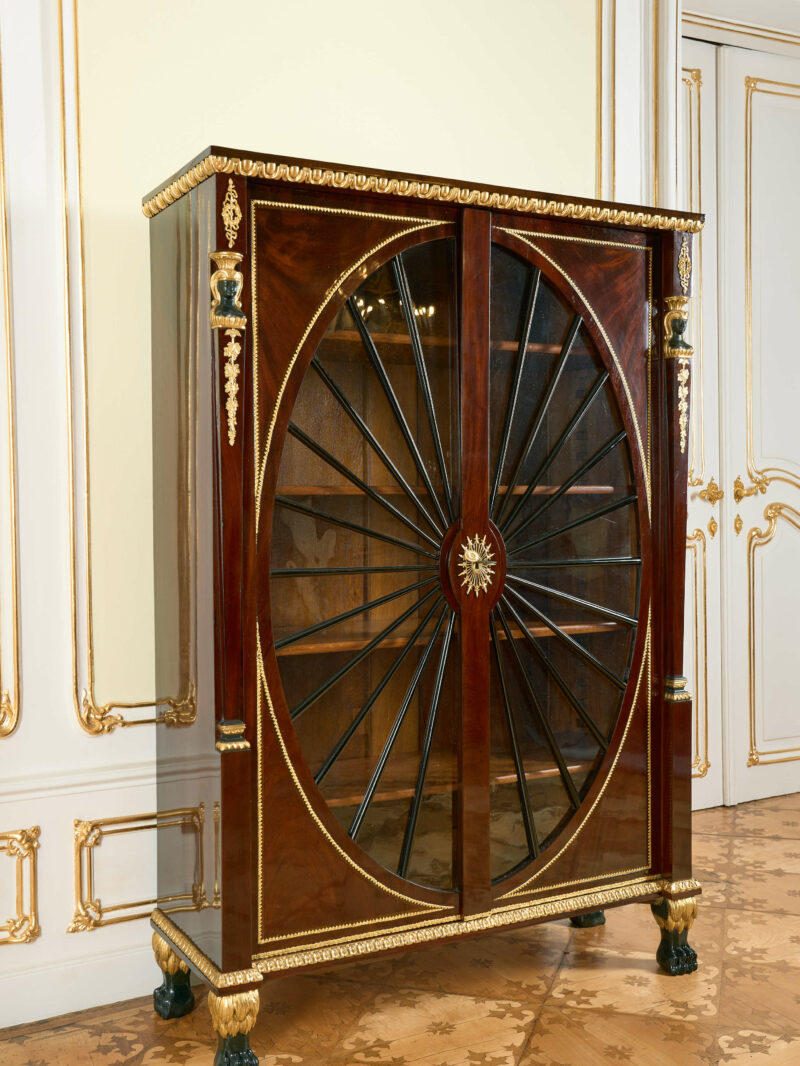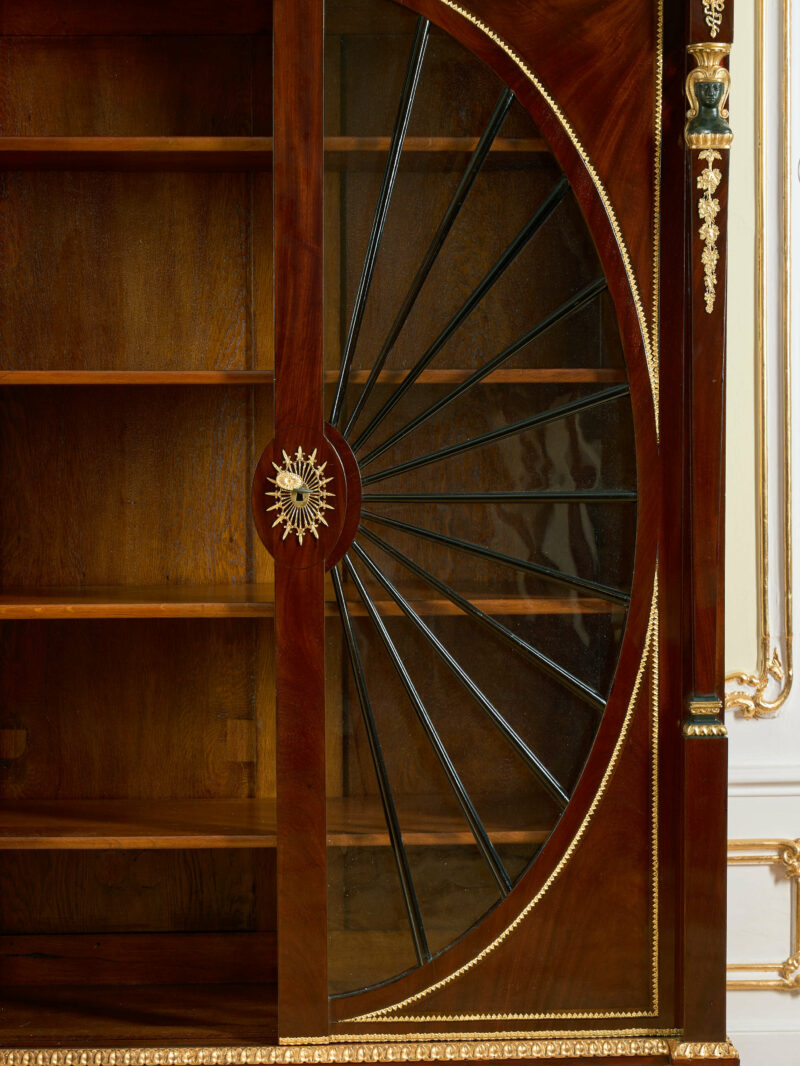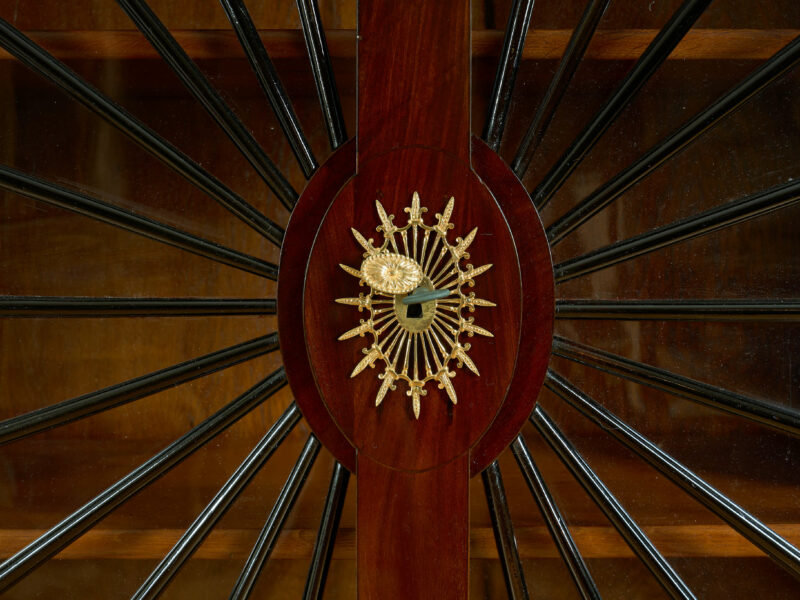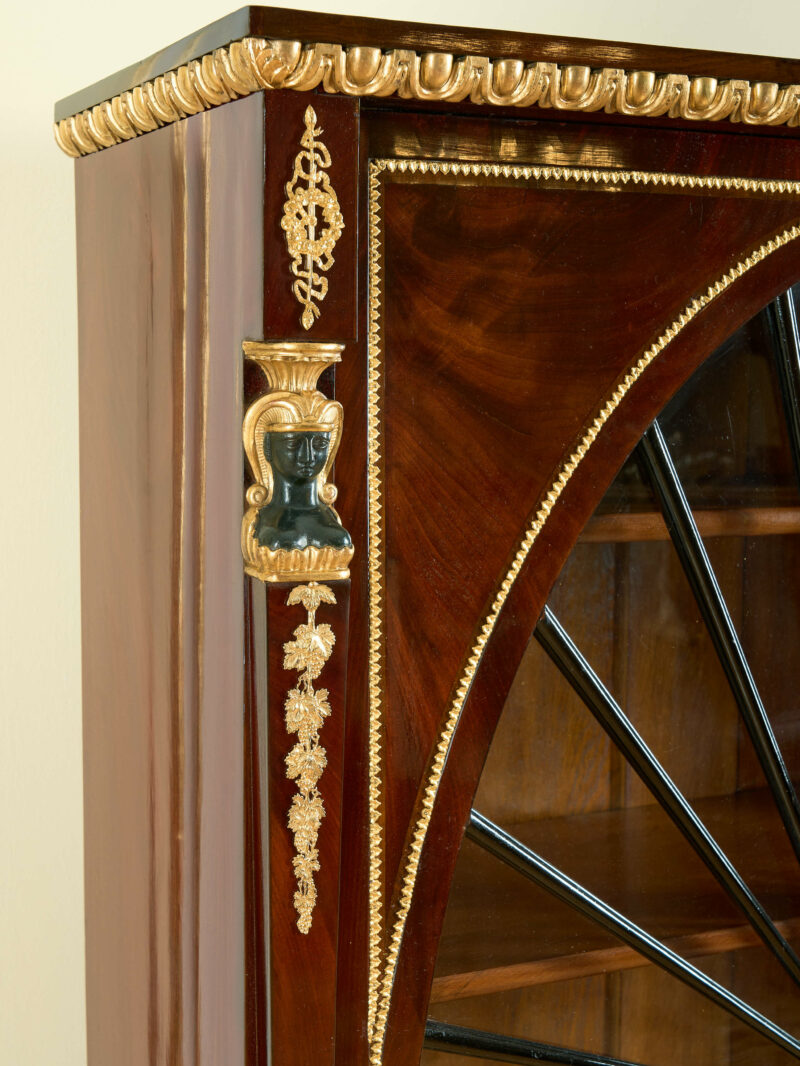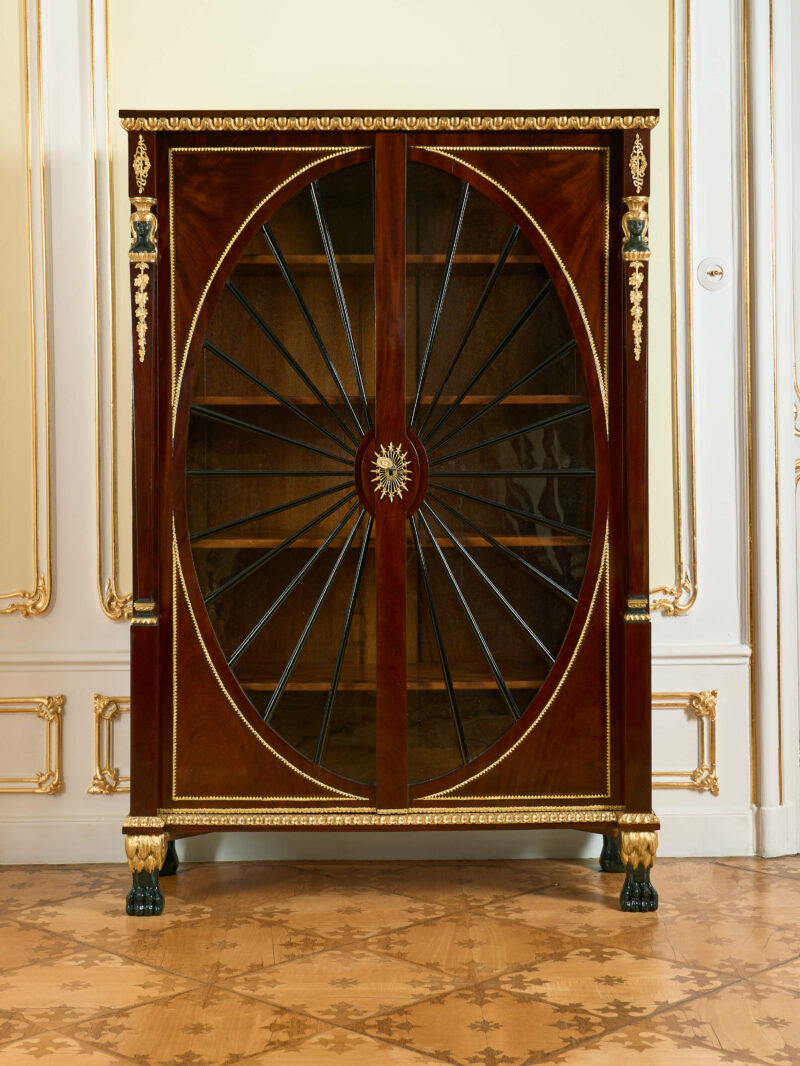
Empire Glass - Cabinet
An extremely rare and beautifully executed Empire vitrine with Egyptian influence. The corpus of the cabinet is made of oak and softwood and is finely veneered with mahogany.
Both the wreath and the base are decorated with ox eyes and an acanthus leaf rod, finely carved and leaf-gilded. The magnificent cabinet stands on four ebonized and leaf-gilded feet, carved in the shape of a lion’s paws.
The main element of the display case is the two doors, glazed in the shape of a sun wheel. The oval shape of the old stained glass windows is interrupted by the ebonized sprouts arranged in the form of rays. The remaining mahogany-veneered elements are decorated all around with a gold-plated metal band in the shape of small leaves arranged in a row.
In the center, the doors are adorned with very finely crafted gilt bronze fittings. The two doors are flanked by conical pilaster strips, both crowned by ebonized and gold-leafed Egyptian busts of women, as well as gilt bronze vine leaves, flower wreaths, and mesh decorations.
The interior of the cabinet is crafted in oak, with four height-adjustable shelves.
The reason for the Egyptian trend was Napoleon’s military campaign of 1798⁄99. A particularly beautiful and important example of this trend in the Empire period was the so-called Egyptian Cabinet, which Maria Ludovica d’Este (1787 – 1816), the third wife of Emperor Franz I, had designed for her apartment on the second floor of the Leopoldine Wing of the Hofburg around 1810⁄12. Much of the furniture made for Empress Ludovica was also executed with antique elements, as we find in our cabinet.
Another example of the outstanding quality and craftsmanship is the mahogany furniture created by Joseph Danhauser in 1822 for the palace (now the Albertina) of Archduke Charles of Saxony-Teschen. Here, too, one finds, for example, a wall console with Egyptianizing elements, which stands in the writing room after the restoration from 1822 – 25.
Additionally, there is a pair of built-in wall cabinets with medallion-shaped central decorations in a mahogany-veneered design, which are located in the so-called death room of Archduke Charles.
A rare and beautiful example that showcases the high craftsmanship that the cabinetmakers of the Empire period were able to produce. Furniture that, after more than 200 years, is still preserved in such perfect form, without shrinkage cracks and deformations, absolutely straight in its line, with exact edges, is a rare contemporary witness to the high art of furniture making.
Some examples can be found in the display collection of the Furniture Museum, formerly the Imperial Furniture Collection / Hofmobiliendepot in Vienna.
Napoleon’s Egyptian Campaign (1798 – 1801):
In 1798, the young Napoleon Bonaparte embarked on his Egyptian campaign, also known as the Egyptian Expedition, on behalf of the French government.
The primary objective of the campaign was to free Egypt from Ottoman rule and strengthen France’s position in the Middle East. The grand expedition fleet, consisting of more than 280 ships and over 30,000 men, was accompanied by the Commission des sciences et des arts, a group of 167 scientists, engineers, artists, doctors, mathematicians, and naturalists. The findings of the expedition were documented in the multi-volume text and image collection Description de l’Égypte, which laid the foundation for modern Egyptology.
Although the expedition ultimately ended in military failure, it led to significant scientific discoveries. The scholars who participated in the campaign made ancient Egyptian culture widely known, sparking a strong interest in early history.
One of the most important discoveries of this period was the Rosetta Stone, found on July 15, 1799, which ultimately enabled Jean-François Champollion to decipher ancient Egyptian hieroglyphs. This not only made the study of Egyptology and the exploration of ancient Egyptian artifacts particularly popular but also triggered a true wave of enthusiasm for Egyptian culture across Europe. Suddenly, Egyptian-style architecture and interior design — such as furniture, painting, decorative fabrics, porcelain, and fashion — became fashionable across the continent. This phenomenon led to the birth of the term “Egyptomania.“
From this movement, Orientalism in art and literature developed throughout the 19th century. This trend reached its peak in the late 19th century, with works by artists such as Auguste Delacroix, Jean Lecomte du Noüy, and Jean-Léon Gérôme, among many others.
Literature:
„Le Mobilier du xix Siècle — en France et en Europe”, p. 212
Here as an Amoire-Bibliothek Austria (1820−1830); the single-door Empire cabinet is made of cherry wood with inlays of maple, rosewood, and amaranth, as well as a central “sun wheel” featuring a gilded sun and sun rays. The model depicted here appears much more rustic and lacks the elegance of the mahogany furniture from our collection…
